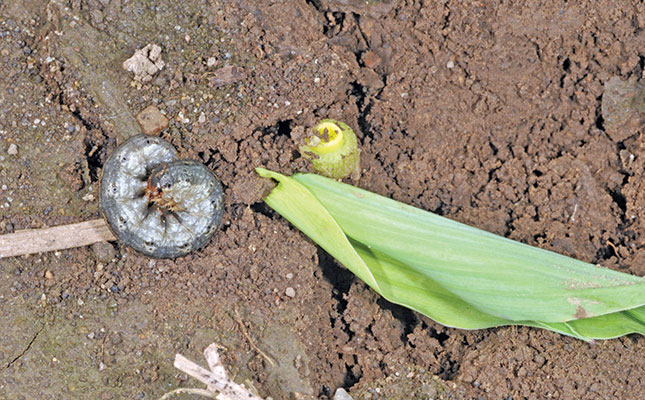
Photo: FW Archive
Widespread damage to crops due to cutworm infestations has been reported in several provinces, and there are early indications that the pest has built up resistance to chemical treatments.
According to Dr Gerhard Verdoorn, operations and stewardship manager at CropLife South Africa, an average of five reports had been received per day during the past few weeks.
READ Integrated pest management system
“Early indications are that the cutworm population may have developed a certain degree of resistance to the pyrethroid insecticides that are registered to control [them]. Further testing will be done to confirm such resistance,” he said.
In addition, farming practices such as no-till were also exacerbating the cutworm outbreaks, Verdoorn said. “Conventional practices of tilling usually bury the worms, which kills them. It is normally a persistent pest throughout the year with a peak in late spring, summer and up to early autumn.”
Many small-scale farmers were losing entire stands of maize and vegetables to the pest, while commercial farmers with young maize plants, or who were preparing to plant their crops, would potentially suffer severe losses.
READ How to achieve optimal maize production
According to a statement by CropLife South Africa, some of the regions worst affected were KwaZulu-Natal, Limpopo, western parts of Mpumalanga, northern and eastern parts of Gauteng, the Free State, and parts of the Eastern Cape.
Cutworms were normally large, fat larvae ranging from pale grey to virtually black in colour, depending on the species and region. They lived just beneath the soil surface and emerged at night to forage. The moths were nondescript grey-brown in colour, the statement said.
Hendrik Jacobs, who practices no-till on his farm near Wasbank in KwaZulu-Natal, said that although the pest affected no-till farmers to a greater extent than conventional farmers, many farmers in the area had been affected and all had suffered losses.
Jacobs said his losses ran to about R1,2 million after a 350ha block of maize was destroyed and he had to replant the entire block.
He said he did spray his crops with pyrethroid insecticides, which had not been effective, and the only product that had been effective against the cutworm was chlorpyrifos .
“The worst affected are the small-scale farmers, who are unable to replant, and if they lose an entire crop, they stop farming.”
Jacobs said cutworm had been a major problem in the area for the past five years, but this was the first time he had lost an entire block to the pest.











